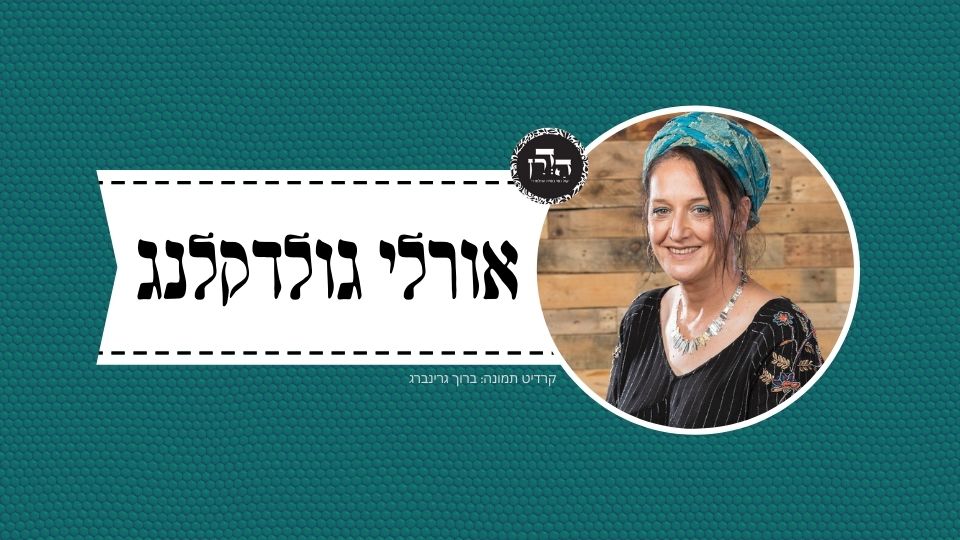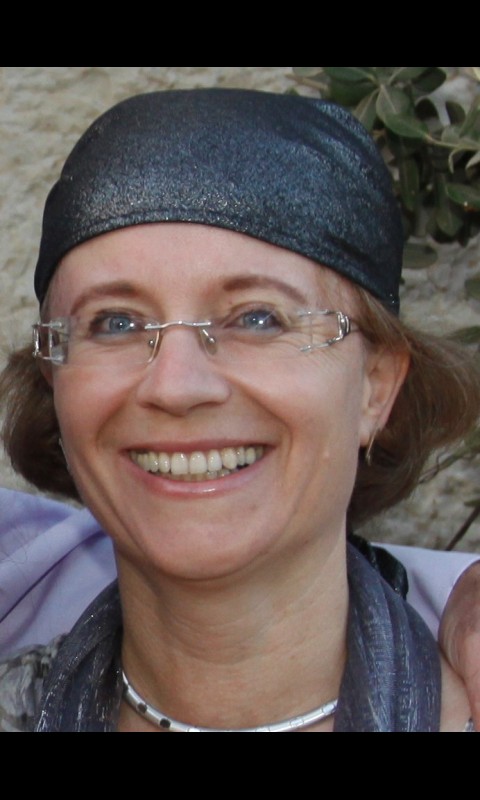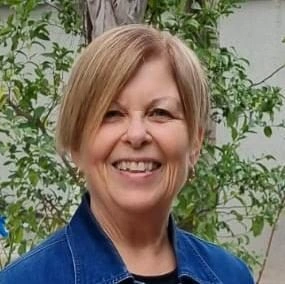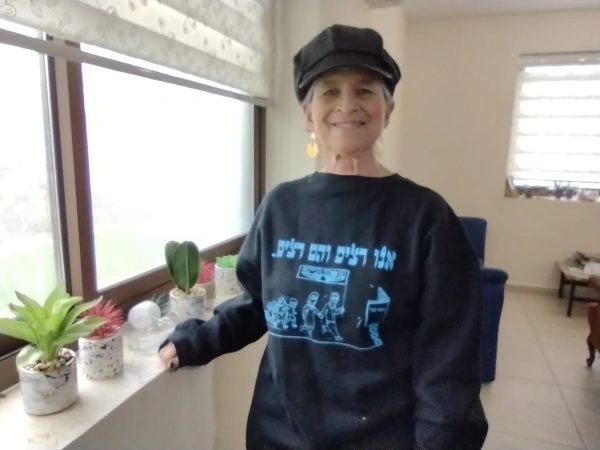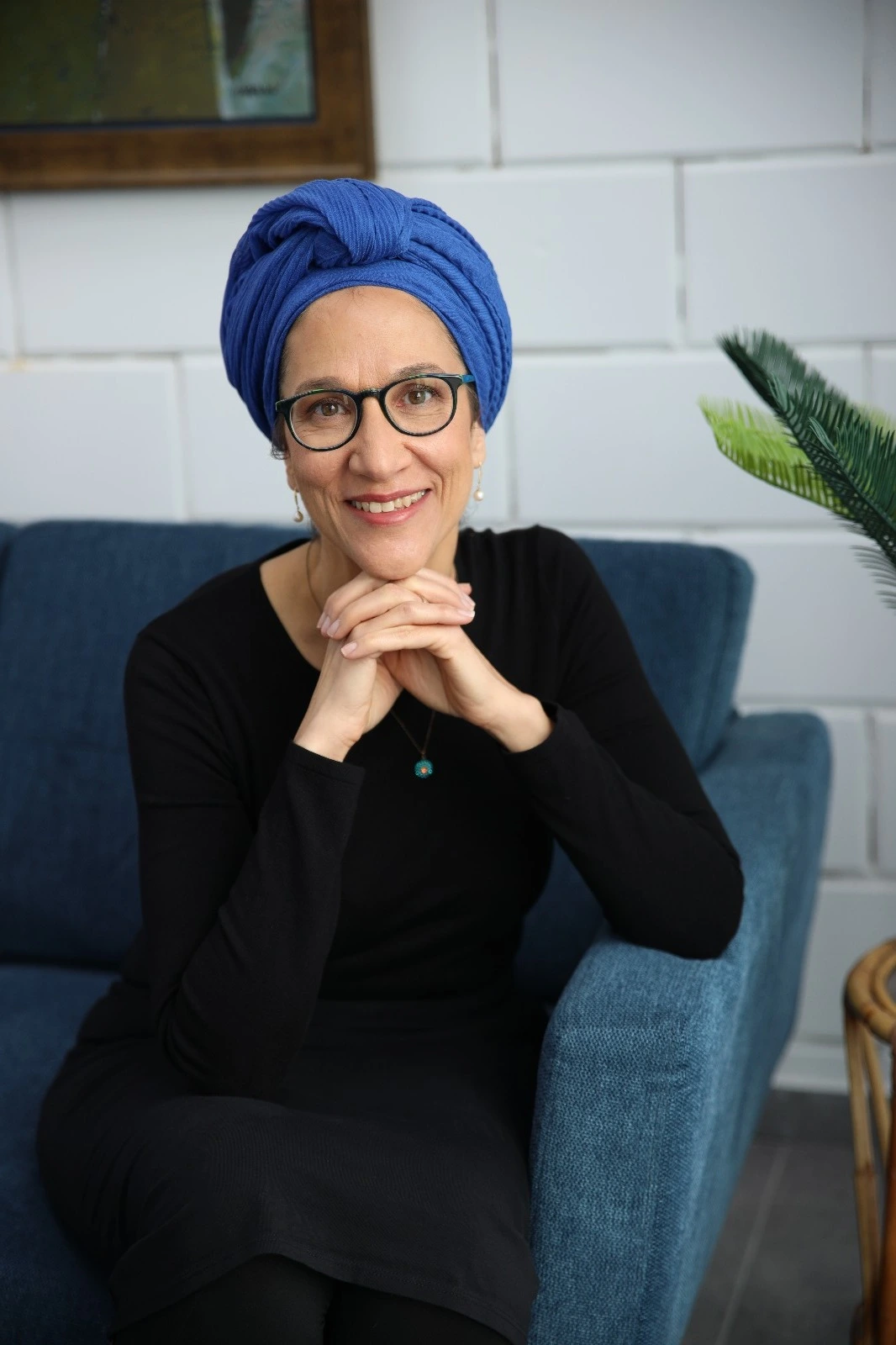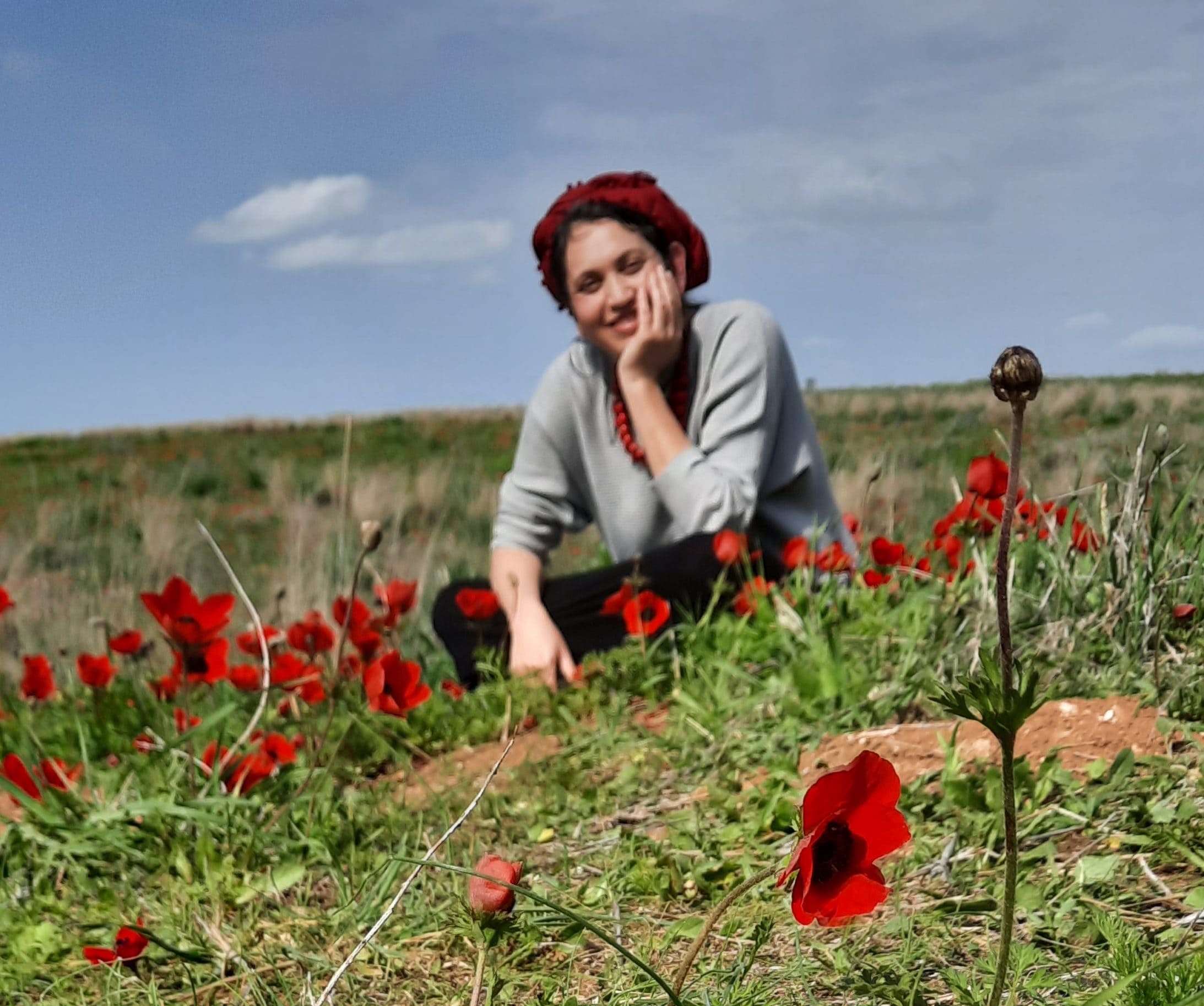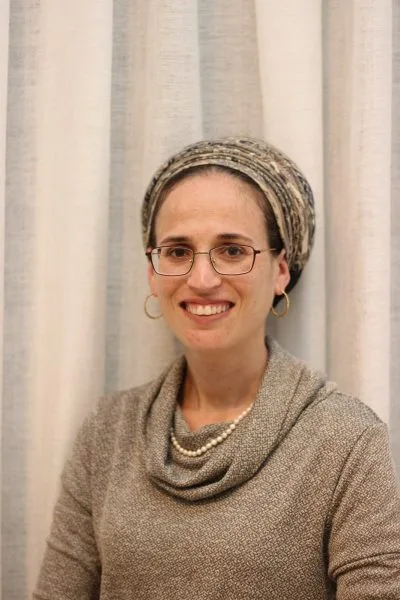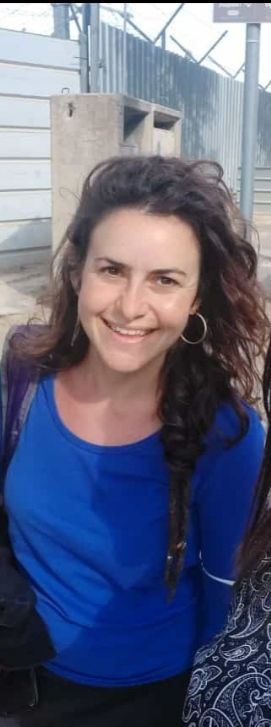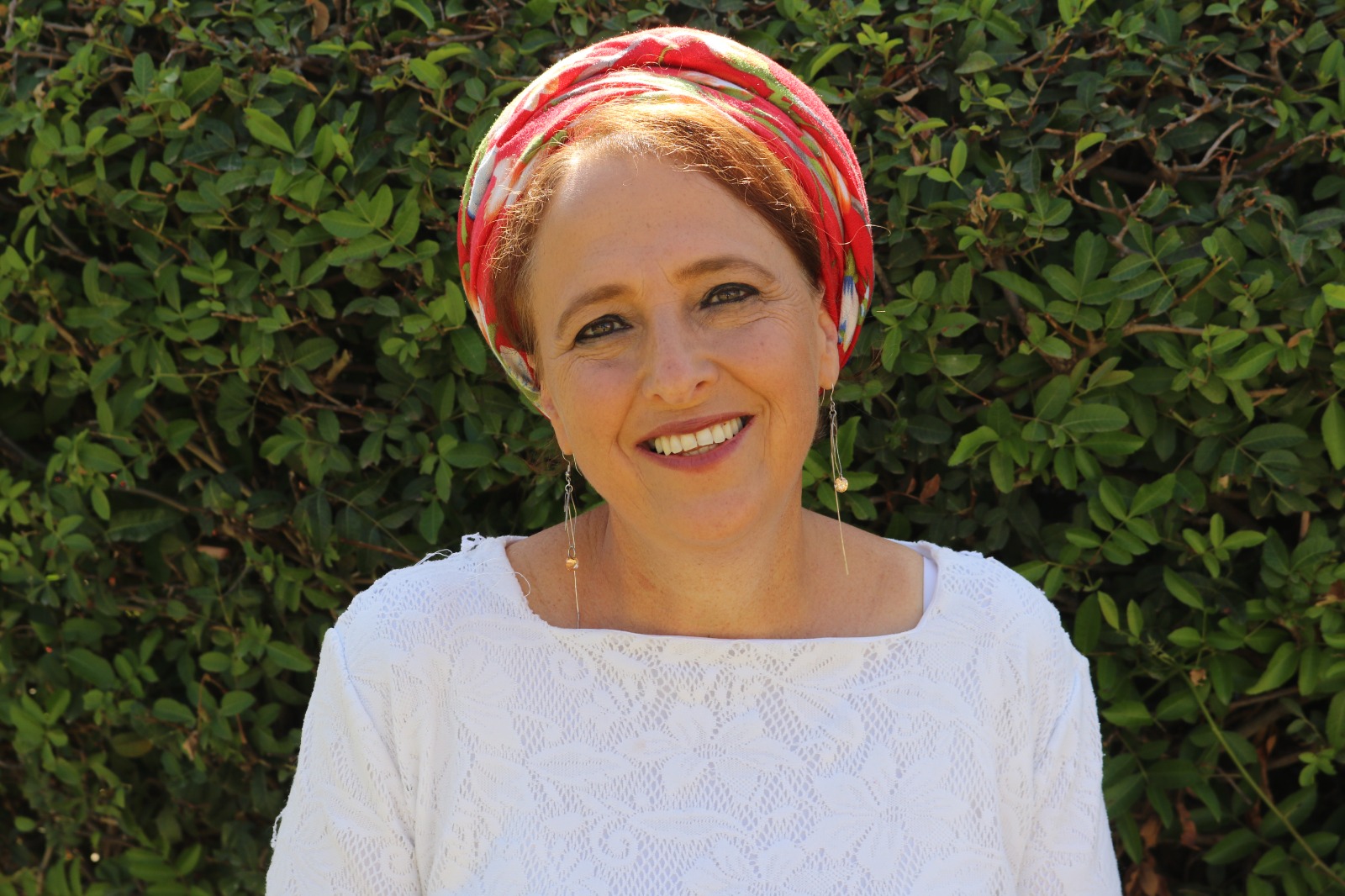עירובין פז
חוֹקֵק בָּהּ אַרְבַּע עַל אַרְבַּע וּמְמַלֵּא.
one may carve in it a hole of four by four handbreadths and draw water through it. Even if there are no actual partitions around the hole, the section surrounding the hole is considered as though it were bent downward and formed partitions ten handbreadths high on all sides. Consequently, it is permitted to draw water through the hole.
אֲמַר לֵיהּ אַבָּיֵי: וְדִילְמָא לָא הִיא, עַד כָּאן לָא קָאָמַר רַבִּי יְהוּדָה הָתָם, אֶלָּא דְּאָמַר: ״גּוּד אַחֵית מְחִיצְתָּא״, אֲבָל ״כּוֹף וְגוּד״ — לָא.
Abaye said to him: But perhaps that is not so, as we can distinguish between the opinions. It is possible that Rabbi Yehuda stated his opinion only there, with regard to the wall of the courtyard and the cistern, as he said that we rely on the halakhic principle of extend and lower the partition. The partition above the cistern is considered as though it descended to the bottom. But the principle of bend the partition and extend it downward, as suggested by Rabbi Ḥananya ben Akavya, no, he does not accept this principle.
וְעַד כָּאן לָא קָאָמַר רַבִּי חֲנַנְיָא בֶּן עֲקַבְיָא הָתָם, אֶלָּא בְּיַמָּהּ שֶׁל טְבֶרְיָא, הוֹאִיל וְיֵשׁ לָהּ אוֹגָנִים, וַעֲיָירוֹת וְקַרְפֵּיפוֹת מַקִּיפוֹת אוֹתָהּ, אֲבָל בִּשְׁאָר מֵימוֹת — לֹא.
And we can likewise say that Rabbi Ḥananya ben Akavya stated his opinion only there, in the case of the balcony, with regard to the Sea of Tiberias, i.e., the Sea of Galilee, since it has clearly defined banks around it, and towns and enclosures surround it on all sides. The Sea of Galilee is surrounded by clear boundaries on all sides and is therefore somewhat similar to a private domain in appearance. Consequently, even a minor adjustment is sufficient. However, with regard to other waters, no, Rabbi Ḥananya ben Akavya did not permit this practice.
אָמַר אַבָּיֵי: וּלְדִבְרֵי רַבִּי חֲנַנְיָא בֶּן עֲקַבְיָא, הָיְתָה סְמוּכָה לַכּוֹתֶל בְּפָחוֹת מִשְּׁלֹשָׁה טְפָחִים — צָרִיךְ שֶׁיְּהֵא אוֹרְכָּהּ אַרְבַּע אַמּוֹת, וְרוֹחְבָּהּ אַחַד עָשָׂר וּמַשֶּׁהוּ.
Abaye said: And according to the statement of Rabbi Ḥananya ben Akavya, if the balcony was less than three handbreadths away from the wall, it is permitted to draw water from it in the following circumstances: Its length must be four cubits, and its width must be eleven handbreadths and any amount. By carving out a hole of slightly more than one handbreadth by four handbreadths on the side near the wall, alongside the other three handbreadths, one creates a hole of four handbreadths by four handbreadths. This hole is surrounded by partitions ten handbreadths high on each side. How so? The wall itself is one partition. The four-cubit length is viewed as bent down on both sides of the hole, forming two partitions of ten handbreadths; the remaining ten handbreadths of the width is seen as though it were bent down, which creates a partition on the fourth side of the balcony.
הָיְתָה זְקוּפָה — צָרִיךְ שֶׁיְּהֵא גּוֹבְהָהּ עֲשָׂרָה טְפָחִים, וְרוֹחְבָּהּ שִׁשָּׁה טְפָחִים וּשְׁנֵי מַשֶּׁהוּיִין.
If the balcony was upright, i.e., it had upright partitions on all sides (Rabbeinu Ḥananel), the height of these partitions must be ten handbreadths, and the width of the balcony must be six handbreadths and two minimal amounts. This leaves slightly more than a handbreadth on each side of the hole of four handbreadths, on which he can stand.
אָמַר רַב הוּנָא בְּרֵיהּ דְּרַב יְהוֹשֻׁעַ: הָיְתָה עוֹמֶדֶת בְּקֶרֶן זָוִית — צָרִיךְ שֶׁיְּהֵא גּוֹבְהָהּ עֲשָׂרָה טְפָחִים, וְרוֹחְבָּהּ שְׁנֵי טְפָחִים וּשְׁנֵי מַשֶּׁהוּיִין.
Rav Huna, son of Rav Yehoshua, said: If it was positioned in a corner between two walls (Rabbeinu Ḥananel), the height of the partition must be ten handbreadths, and the requisite width of the balcony must be two handbreadths and two minimal amounts. As he is able to stand, he is provided with actual partitions.
וְאֶלָּא הָא דְּתַנְיָא, רַבִּי חֲנַנְיָא בֶּן עֲקַבְיָא אוֹמֵר: גְּזוּזְטְרָא שֶׁיֵּשׁ בָּהּ אַרְבַּע אַמּוֹת עַל אַרְבַּע אַמּוֹת — חוֹקֵק בָּהּ אַרְבָּעָה עַל אַרְבָּעָה וּמְמַלֵּא, הֵיכִי מַשְׁכַּחַתְּ לַהּ?
The Gemara asks: However, with regard to that which is taught in a baraita that Rabbi Ḥananya ben Akavya said: If a balcony that has an area of four cubits by four cubits is suspended above water, one carves in it a hole of four by four handbreadths and then draws water through it, under what circumstances can a balcony with these dimensions be found?
דַּעֲבִידָא כִּי אֲסִיתָא.
The Gemara answers: It is necessary in the case of a balcony that is built in the shape of a mortar, where the balcony is positioned over the water on its own pillars and far removed from any wall. In that case, all of the partitions must be constructed from its floor space. And the balcony must be four cubits by four cubits in size.
מַתְנִי׳ אַמַּת הַמַּיִם שֶׁהִיא עוֹבֶרֶת בֶּחָצֵר — אֵין מְמַלְּאִין הֵימֶנָּה בְּשַׁבָּת, אֶלָּא אִם כֵּן עָשׂוּ לָהּ מְחִיצָה גְּבוֹהָ עֲשָׂרָה טְפָחִים בִּכְנִיסָה וּבִיצִיאָה. רַבִּי יְהוּדָה אוֹמֵר: כּוֹתֶל שֶׁעַל גַּבָּהּ תִּידּוֹן מִשּׁוּם מְחִיצָה.
MISHNA: With regard to a water channel that passes through a courtyard, the residents may not draw water from it on Shabbat, unless they erected for it a partition ten handbreadths high at the entrance and at the exit of the courtyard. Rabbi Yehuda says: There is no need for a special partition, as the wall that runs on top of it, i.e., the courtyard wall, is considered as a partition.
אָמַר רַבִּי יְהוּדָה: מַעֲשֶׂה בְּאַמָּה שֶׁל אָבֵל, שֶׁהָיוּ מְמַלְּאִין מִמֶּנָּה עַל פִּי זְקֵנִים בְּשַׁבָּת! אָמְרוּ לוֹ: מִפְּנֵי שֶׁלֹּא הָיָה בָּהּ כַּשִּׁיעוּר.
Rabbi Yehuda said: There was an incident involving a water channel that passed through the courtyards of the town of Avel, from which the residents would draw water from it on Shabbat by the authority of the Elders, relying on the courtyard wall suspended above it. They said to him: It is due to the fact that channel was not of the size that requires a partition, i.e., it was less than ten handbreadths deep or less than ten handbreadths wide, it was permitted to draw water from it even without a partition.
גְּמָ׳ תָּנוּ רַבָּנַן: עָשׂוּ לָהּ בִּכְנִיסָה וְלֹא עָשׂוּ לָהּ בִּיצִיאָה, עָשׂוּ לָהּ בִּיצִיאָה וְלֹא עָשׂוּ לָהּ בִּכְנִיסָה — אֵין מְמַלְּאִין הֵימֶנָּה בְּשַׁבָּת, אֶלָּא אִם כֵּן עָשׂוּ לָהּ מְחִיצָה עֲשָׂרָה טְפָחִים בִּיצִיאָה וּבִכְנִיסָה. רַבִּי יְהוּדָה אוֹמֵר: כּוֹתֶל שֶׁעַל גַּבָּהּ תִּידּוֹן מִשּׁוּם מְחִיצָה.
GEMARA: The Sages taught in a baraita: If they erected a partition for the water channel at the entrance but they did not erect one for it at the exit, or if they erected a partition for it at the exit but they did not erect one for it at the entrance, one may not draw water from it on Shabbat, unless they erected for it a partition ten handbreadths high both at the exit and at the entrance. Rabbi Yehuda says: The wall that runs on top of it, i.e., the courtyard wall, is considered as a partition. Therefore, there is no need for a special partition.
אָמַר רַבִּי יְהוּדָה: מַעֲשֶׂה בְּאַמַּת הַמַּיִם שֶׁהָיְתָה בָּאָה מֵאָבֵל לְצִפּוֹרִי, וְהָיוּ מְמַלְּאִין הֵימֶנָּה בְּשַׁבָּת עַל פִּי הַזְּקֵנִים.
Rabbi Yehuda said: There was an incident involving the water channel that went from Avel to Tzippori, and the residents would draw water from it on Shabbat by the authority of the Elders, without any additional partition.
אָמְרוּ לוֹ: מִשָּׁם רְאָיָיה?! מִפְּנֵי שֶׁלֹּא הָיְתָה עֲמוּקָּה עֲשָׂרָה טְפָחִים וְרוֹחְבָּהּ אַרְבָּעָה.
They said to him: Are you trying to bring a proof from there? That was either due to the fact that the channel was not ten handbreadths deep or because it was not four handbreadths wide. It lacked the requisite measure to be considered a domain in its own right. Everyone agrees that it is permitted to draw water from it even without an additional partition.
תַּנְיָא אִידַּךְ: אַמַּת הַמַּיִם הָעוֹבֶרֶת בֵּין הַחַלּוֹנוֹת, פָּחוֹת מִשְּׁלֹשָׁה — מְשַׁלְשֵׁל דְּלִי וּמְמַלֵּא. שְׁלֹשָׁה — אֵין מְשַׁלְשֵׁל דְּלִי וּמְמַלֵּא. רַבָּן שִׁמְעוֹן בֶּן גַּמְלִיאֵל אוֹמֵר: פָּחוֹת מֵאַרְבָּעָה — מְשַׁלְשֵׁל דְּלִי וּמְמַלֵּא, אַרְבָּעָה — אֵין מְשַׁלְשֵׁל דְּלִי וּמְמַלֵּא.
It was taught in another baraita: With regard to a water channel that passes between the windows of two houses, if it is less than three handbreadths, one may lower a bucket from the window and draw water from it; however, if it is three handbreadths, one may not lower a bucket and draw water from it. Rabban Shimon ben Gamliel says: If it is less than four handbreadths, one may lower a bucket and draw water from it; but if it is at least four handbreadths, one may not lower a bucket and draw water.
בְּמַאי עָסְקִינַן? אִילֵימָא: בְּאַמַּת הַמַּיִם גּוּפַהּ, וְאֶלָּא הָא דְּכִי אֲתָא רַב דִּימִי אָמַר רַבִּי יוֹחָנָן: אֵין כַּרְמְלִית פְּחוּתָה מֵאַרְבָּעָה —
With regard to these measures of three and four handbreadths, the Gemara asks: With what are we dealing here? If you say this halakha is referring to the water channel itself, that it was three or four handbreadths wide, this presents a difficulty, for when Rav Dimi came from Eretz Yisrael to Babylonia, he said that Rabbi Yoḥanan said: A karmelit cannot be less than four handbreadths wide. The karmelit is an intermediate domain established by the Sages, whose status is between a public and a private domain. Any open area that is not a public thoroughfare, e.g., a field, sea, river, alleyway, or a lane, is classified as a karmelit. It is prohibited to carry an article four cubits within a karmelit, or to transfer an object from a private domain or a public domain to a karmelit, or vice versa. One who draws water through a window from a water channel into a house has carried from a karmelit to a private domain. Consequently, if the tanna’im of the baraita dispute the width of the channel, they are in effect disagreeing about the minimal size of a karmelit.
לֵימָא כְּתַנָּאֵי אַמְרַהּ לִשְׁמַעְתֵּיהּ?
The Gemara resumes its question: Let us say, then, that the teaching that Rav Dimi cited, that a karmelit cannot be less than four handbreadths wide, was actually the subject of a dispute of tanna’im and not a unanimous halakha.
אֶלָּא בַּאֲגַפֶּיהָ, וּלְהַחְלִיף.
The Gemara rejects the previous explanation. Rather, the measure of three or four handbreadths is referring not to the channel itself but to the banks of the channel, and it is stated with regard to an act of exchange. The dispute here does not concern the measure of a karmelit, but the measure of an exempt domain. It is permitted to transfer the empty bucket from the window, which is a private domain, by way of the channel’s banks, which are exempt domains, to the water channel, which is a karmelit, and back again with the full bucket.
וְהָא כִּי אֲתָא רַב דִּימִי אָמַר רַבִּי יוֹחָנָן: מָקוֹם שֶׁאֵין בּוֹ אַרְבָּעָה עַל אַרְבָּעָה — מוּתָּר לִבְנֵי רְשׁוּת הַיָּחִיד וְלִבְנֵי רְשׁוּת הָרַבִּים לְכַתֵּף עָלָיו, וּבִלְבַד שֶׁלֹּא יַחְלִיפוּ.
The Gemara raises a difficulty: But when Rav Dimi came from Eretz Yisrael to Babylonia, he said that Rabbi Yoḥanan said: A place that does not have an area of four by four handbreadths is an exempt domain. Consequently, if this place is situated between a public domain and a private domain, it is permitted for both the people of the private domain and for the people of the public domain to adjust the burdens on their shoulders on it, provided that they do not exchange objects between them via the exempt domain. How, then, can the bucket be transferred from the window to the channel, and vice versa, by means of the banks?
הָתָם רְשׁוּיוֹת דְּאוֹרָיְיתָא,
The Gemara answers: There, Rav Dimi is referring to domains by Torah law, i.e., this halakha involves the transfer of objects from a private domain to a public domain via an exempt domain. The Sages forbade this activity, so that people would not transfer objects directly from the private domain to the public domain.
הָכָא רְשׁוּיוֹת דְּרַבָּנַן.
However, here, Rav Dimi is referring to domains by rabbinic law. As the transfer of objects from a private domain to a karmelit is prohibited only by rabbinic decree, the Sages did not prohibit this transfer when it is accomplished by way of an exempt domain.
וְהָא רַבִּי יוֹחָנָן בָּרְשׁוּיוֹת דְּרַבָּנַן נָמֵי אָמַר, (דְּתַנְיָא): כּוֹתֶל שֶׁבֵּין שְׁתֵּי חֲצֵירוֹת, גָּבוֹהַּ עֲשָׂרָה טְפָחִים וְרוֹחַב אַרְבָּעָה — מְעָרְבִין שְׁנַיִם, וְאֵין מְעָרְבִין אֶחָד.
The Gemara raises a difficulty: But Rabbi Yoḥanan said that transferring objects from one domain to another by way of an exempt domain is prohibited even in the case of domains that apply by rabbinic law. As we learned in a mishna: In the case of a wall that is between two courtyards, if it is ten handbreadths high and four handbreadths wide, the residents establish two eiruvin, a separate one for each courtyard, but they do not establish one joint eiruv.
הָיוּ בְּרֹאשׁוֹ פֵּירוֹת — אֵלּוּ עוֹלִין מִכָּאן וְאוֹכְלִין, וְאֵלּוּ עוֹלִין מִכָּאן וְאוֹכְלִין.
If there was produce on top of the wall, these, the residents of one courtyard, may ascend from this side and eat them, and those, the residents of the other courtyard, may ascend from the other side and eat them, provided that they do not bring the produce down from the top of the wall to the courtyards.
נִפְרַץ הַכּוֹתֶל, עַד עֶשֶׂר אַמּוֹת — מְעָרְבִין שְׁנַיִם, וְאִם רָצוּ מְעָרְבִין אֶחָד, מִפְּנֵי שֶׁהוּא כְּפֶתַח. יוֹתֵר מִכָּאן — מְעָרְבִין אֶחָד וְאֵין מְעָרְבִין שְׁנַיִם.
If the wall is breached, a distinction applies: If the breach is up to ten cubits wide, they may establish two eiruvin, and if they wish, they may establish one eiruv, for it is like an entrance. This breach is similar to any opening of less than ten cubits. If the breach is more than this, they may establish one eiruv, but they may not establish two eiruvin. A breach of this size nullifies the partition, as the two courtyards merge into a single domain.
וְהָוֵינַן בַּהּ: אֵין בּוֹ אַרְבָּעָה מַאי? אָמַר רַב: אֲוִיר שְׁתֵּי רְשׁוּיוֹת שׁוֹלֶטֶת בּוֹ, וְלֹא יָזִיז בּוֹ מְלֹא נִימָא.
And we discussed this mishna and raised a question: If this wall is not four handbreadths thick, what is the halakha? Rav said: In that case, the air of two domains controls it. As the wall is not broad enough to be considered a domain of its own, its top belongs to both courtyards, and it is therefore prohibited to both of them. Accordingly, one may not move anything on top of the wall even as much as a hairsbreadth.
וְרַבִּי יוֹחָנָן אָמַר: אֵלּוּ מַעֲלִין מִכָּאן וְאוֹכְלִין, וְאֵלּוּ מַעֲלִין מִכָּאן וְאוֹכְלִין.
And Rabbi Yoḥanan disagreed and said: These, the residents of one courtyard, may carry up their food from their courtyard to the top of the wall and eat it there, and those, the residents of the other courtyard, may likewise carry up their food from their courtyard and eat it there. The entire top of the wall has the status of an exempt domain that can be combined with either courtyard, provided that the residents of the different courtyards do not exchange food between them.
וְאַזְדָּא רַבִּי יוֹחָנָן לְטַעְמֵיהּ, דְּכִי אֲתָא רַב דִּימִי אָמַר רַבִּי יוֹחָנָן: מָקוֹם שֶׁאֵין בּוֹ אַרְבָּעָה עַל אַרְבָּעָה — מוּתָּר לִבְנֵי רְשׁוּת הָרַבִּים וְלִבְנֵי רְשׁוּת הַיָּחִיד לְכַתֵּף עָלָיו, וּבִלְבַד שֶׁלֹּא יַחֲלִיפוּ!
And Rabbi Yoḥanan follows his regular line of argument here, for when Rav Dimi came from Eretz Yisrael to Babylonia, he said that Rabbi Yoḥanan said: A place that contains less than four by four handbreadths is an exempt domain. Consequently, if this place is located between a public domain and a private domain, it is permitted for the people of the private domain and for the people of the public domain to load their burdens onto their shoulders in it, as long as they do not exchange objects with each other by way of the exempt domain. Apparently, Rabbi Yoḥanan prohibited exchanging articles between two domains, even if they are rabbinic domains.
הָהִיא זְעֵירִי אַמְרַהּ. וְלִזְעֵירִי קַשְׁיָא הָא!
The Gemara answers: That ruling concerning a wall between two courtyards, Ze’eiri stated it in the name of Rabbi Yoḥanan. Rav Dimi transmitted a different tradition of Rabbi Yoḥanan’s opinion. The Gemara raises a difficulty: Nonetheless, this halakha concerning a water channel between two windows is difficult according to Ze’eiri.
זְעֵירִי מוֹקֵים לַהּ בְּאַמַּת הַמַּיִם גּוּפַהּ. וְרַב דִּימִי תַּנָּאֵי הִיא.
The Gemara answers: Ze’eiri explains that the measures mentioned in the baraita are referring to the water channel itself. That is to say, the dispute between Rabban Shimon ben Gamliel and the Sages does not concern the width of the banks of the channel but the width of the channel itself, as they dispute the basic parameters of a karmelit. And Ze’eiri maintains that the teaching of Rav Dimi, that a karmelit can be no less than four handbreadths wide, is in fact the subject of a dispute between tanna’im.
וְתִיהְוֵי כִּי חוֹרֵי כַּרְמְלִית!
The Gemara raises a difficulty: And let the water channel that passes through the courtyard be treated at least like the cavities of a karmelit, even if it is not wide enough to be considered a karmelit on its own. Just as the cavities in the wall of a private domain are considered a private domain even if they do not include the prescribed measure of a private domain, the water channel passing through the courtyard should likewise be considered as a cavity of the larger water channel in the street. It should therefore have the status of a karmelit.
אַבָּיֵי בַּר אָבִין וְרַב חֲנִינָא בַּר אָבִין דְּאָמְרִי תַּרְוַיְיהוּ: אֵין חוֹרִין לְכַרְמְלִית.
The Gemara answers: Abaye bar Avin and Rav Ḥanina bar Avin both said: There is no category of cavities for a karmelit. As a karmelit is only a rabbinic in origin, the halakha is not so stringent with regard to this domain. Consequently, a karmelit does not annex nearby cavities.
רַב אָשֵׁי אָמַר: אֲפִילּוּ תֵּימָא יֵשׁ חוֹרִין לְכַרְמְלִית — הָנֵי מִילֵּי בִּסְמוּכָה. הָכָא, בְּמוּפְלֶגֶת.
Rav Ashi said: You can even say that in general there are holes for a karmelit, but this applies only to holes that are adjacent to the karmelit, and are therefore nullified by it. Here, however, we are dealing with a water channel that is far removed from the karmelit. Therefore, it does not assume the status of the karmelit.
רָבִינָא אָמַר: כְּגוֹן דַּעֲבַד לַהּ נִיפְקֵי אַפּוּמַּהּ.
Ravina said a different explanation of the dispute between Rabban Shimon ben Gamliel and the Rabbis: The measures of three and four handbreadths refer neither to the width of the water trench nor to the width of its banks. Rather, we are dealing with a case where one fashioned outlets for the water channel at its ends, i.e., one formed gaps in the partitions to allow the water to flow.
וְאָזְדוּ רַבָּנַן לְטַעְמַיְיהוּ, וְרַבִּי שִׁמְעוֹן בֶּן גַּמְלִיאֵל לְטַעְמֵיהּ.
And the Rabbis follow their regular line of argument, that the principle of lavud applies only to a gap less than three handbreadths wide. An opening less than three handbreadths is therefore considered completely closed, while one of four is not viewed as closed. And Rabban Shimon ben Gamliel follows his regular line of argument, that the principle of lavud applies even to a gap of four handbreadths.
מַתְנִי׳ גְּזוּזְטְרָא שֶׁהִיא לְמַעְלָה מִן הַמַּיִם אֵין מְמַלְּאִין הֵימֶנָּה בְּשַׁבָּת אֶלָּא אִם כֵּן עָשׂוּ לָהּ מְחִיצָה גְּבוֹהָה עֲשָׂרָה טְפָחִים, בֵּין מִלְּמַעְלָה, בֵּין מִלְּמַטָּה.
MISHNA: With regard to a balcony that extends over a body of water, if a hole was opened in the floor, its residents may not draw water from it through the hole on Shabbat, unless they erected for it a partition ten handbreadths high around the hole. It is permitted to draw water by means of that partition, whether it is positioned above the balcony, in which case the partition is seen as descending downward, or whether it is placed below the balcony.
וְכֵן שְׁתֵּי גְזוּזְטְרָאוֹת זוֹ לְמַעְלָה מִזּוֹ, עָשׂוּ לְעֶלְיוֹנָה וְלֹא עָשׂוּ לְתַחְתּוֹנָה — שְׁתֵּיהֶן אֲסוּרוֹת עַד שֶׁיְּעָרְבוּ.
And likewise, with regard to two such balconies, one above the other, if they erected a partition for the upper balcony but they did not erect one for the lower one, the residents are both prohibited from drawing water through the upper one, unless they establish an eiruv between them.
גְּמָ׳ מַתְנִיתִין דְּלָא כַּחֲנַנְיָא בֶּן עֲקַבְיָא. דְּתַנְיָא, חֲנַנְיָא בֶּן עֲקַבְיָא אוֹמֵר: גְּזוּזְטְרָא שֶׁיֵּשׁ בָּהּ אַרְבַּע עַל אַרְבַּע אַמּוֹת חוֹקֵק בָּהּ אַרְבָּעָה עַל אַרְבָּעָה, וּמְמַלֵּא.
GEMARA: The Gemara comments: The mishna is not in accordance with the opinion of Ḥananya ben Akavya, as it was taught in a baraita that Ḥananya ben Akavya says: If a balcony that contains four cubits by four cubits is suspended above water, one may carve out a hole of four handbreadths by four handbreadths in it and draw water through it. The section of the floor surrounding the hole is considered as though it bent downward and formed a partition ten handbreadths high on all sides. Consequently, no other partition is necessary.
אָמַר רַבִּי יוֹחָנָן מִשּׁוּם רַבִּי יוֹסֵי בֶּן זִימְרָא: לֹא הִתִּיר רַבִּי חֲנַנְיָא בֶּן עֲקַבְיָא אֶלָּא בְּיַמָּהּ שֶׁל טְבֶרְיָא, הוֹאִיל וְיֵשׁ לָהּ אוֹגָנִים, וַעֲיָירוֹת וְקַרְפֵּיפוֹת מַקִּיפוֹת אוֹתָהּ, אֲבָל בִּשְׁאָר מֵימוֹת — לֹא.
Rabbi Yoḥanan said in the name of Rabbi Yosei ben Zimra: Rabbi Ḥananya ben Akavya permitted a balcony that is not surrounded by partitions only in the case of the Sea of Tiberias, the Sea of Galilee, as it has clearly defined banks that are visible on all sides, and towns and enclosures surround it. It is therefore considered part of an inhabited area. But with regard to other waters, such as larger seas, no, he did not permit them.
תָּנוּ רַבָּנַן: שְׁלֹשָׁה דְּבָרִים הִתִּיר רַבִּי חֲנַנְיָא בֶּן עֲקַבְיָא לְאַנְשֵׁי טְבֶרְיָא: מְמַלְּאִין מַיִם מִגְּזוּזְטְרָא בַּשַּׁבָּת, וְטוֹמְנִין בְּעֵצָה, וּמִסְתַּפְּגִין בַּאֲלוּנְטִית.
Our Sages taught a baraita: Rabbi Ḥananya ben Akavya permitted three activities to the inhabitants of Tiberias: They may draw water from the sea through a hole cut out of a balcony on Shabbat, and they may insulate produce in the pods of legumes, and they may dry themselves on Shabbat with a towel [aluntit].
מְמַלְּאִין מַיִם מִגְּזוּזְטְרָא בַּשַּׁבָּת: הָא דַּאֲמַרַן. וְטוֹמְנִין בְּעֵצָה מַאי הִיא, דְּתַנְיָא: הִשְׁכִּים לְהָבִיא פְּסוֹלֶת, אִם בִּשְׁבִיל שֶׁיֵּשׁ עָלָיו טַל — הֲרֵי הוּא בְּ״כִי יוּתַּן״,
The Gemara clarifies this baraita: They may draw water through a hole cut out of a balcony on Shabbat is the halakha that we stated above. And they may insulate produce in the pods of legumes; what is this halakha? As it was taught in a baraita: If one rose early in the morning to bring residue from the field, e.g., the straw of wheat or the stalks or pods of legumes, in order to store his produce in them, the following distinction applies: If he rose early because the residue still has dew on it, and he wants to use this moisture for his produce, this instance is considered to be in the following category: If any water be put. Food or produce can contract ritual impurity only if it has come into contact with a liquid, either directly through the action of its owner, or without his direct intervention but with his approval. This is derived from the verse: “But if any water be put on the seed, and any part of their carcass falls on it, it shall be unclean to you” (Leviticus 11:38). Returning to our issue, if this person rose early because the residue still has dew on it, the produce he stores in it is rendered susceptible to ritual impurity, as it has come into contact with the dew with its owner’s approval.
וְאִם בִּשְׁבִיל שֶׁלֹּא יִבָּטֵל מִמְּלַאכְתּוֹ — אֵינוֹ בְּ״כִי יוּתַּן״. וּסְתָם
And if one rose early only in order not to neglect his usual work, this is not considered an instance of if it be put, as it was not his intention to place the dew on the produce. Unintended contact with a liquid does not render food susceptible to ritual impurity. And normally, unless they specify otherwise,



